
5 reasons 3PD want to work with your delivery team
February 24, 2023
Explore how implementing efficient delivery management strategies can support your restaurant’s dedication to minimizing its carbon footprint.

Right now there are some amazing innovative ideas that food businesses across the globe are introducing in a bid to reduce their carbon footprint, tackle waste issues and improve their overall sustainability credentials.
However, looking at the role that efficient food delivery management can play in enabling hospitality venues and restaurants to reduce their carbon footprint is important for restaurant owners.
Whether it’s about fulfilling corporate social responsibility obligations due to existing legislation or engaging in good PR and customer satisfaction, we want to give kudos to restaurants that are implementing carbon-neutral activities in order to reduce their contributions to climate change.
A great example of one of our favourite restaurants that is paving the way for carbon emission reductions in the food industry is Burger King.
They have already taken a stand against greenhouse gases (GHGs) with their menu items… the “reduced methane Whopper”, which the company claims to be 33% less harmful than a regular Whopper.
In addition, their cows are made to feed on lemongrass, which reduces emissions and lowers the company’s carbon footprint.
Genius idea, right?
Ok, maybe it’s not life-changing. And it might not solve additional issues such as last-mile delivery problems in the industry. But whether it’s a headline-grabbing initiative or a smaller step, it all contributes to the bigger picture – a more sustainable business model.
We’ve put together this blog post to not only raise awareness about the climate issue within the food delivery industry but to highlight the selection of ways in which restaurants can operate, procure and deliver on reducing their contribution to climate change.
Alas, here are 4.5 ways your restaurant can have a more eco-friendly food delivery service.
Who could have anticipated that a time would come when virtually every aspect of our lives would be automated?
While this notion had been in the realm of possibility, the acceleration of this timeline was significantly propelled by the coronavirus pandemic.
Attempting to automate food delivery was no exception to the rule. Particularly due to the unlawful act of leaving your house during the latter months of 2020 to grab some food!
As such, delivery management software was born. And not only does it help you to reduce delivery times and save up to 24% on delivery costs, it even helps your delivery business to become more eco-friendly!
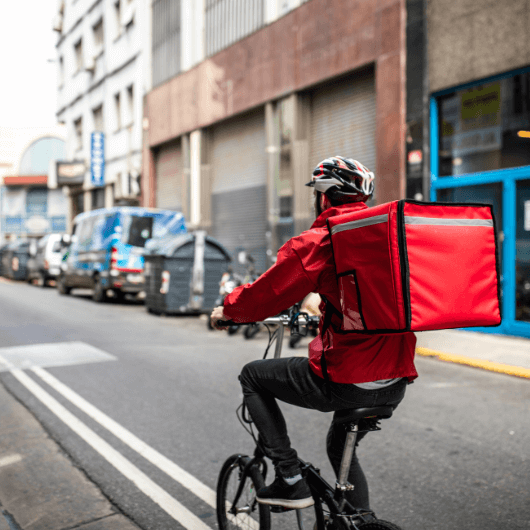
In a nutshell, automating delivery removes the need for restaurants to manually manage each delivery order. Saving a significant amount of time and fuel costs for a restaurant business.
Furthermore leveraging auto-dispatch technology can ensure that each delivery order will be assigned to the most efficient delivery driver, every single time.
For instance, let’s say the delivery driver who is closest to the store and is a bike delivery driver would be most efficient for the next delivery order. Automatically assigning an order to them using auto dispatch technology would save fuel and reduce carbon emissions, as excessive miles aren’t covered by a driver who is far away.
Better still, the right delivery management software will be able to merge multiple deliveries into one. This means that only one driver makes the journey instead of several.
And in North America where delivery fees are pretty high, paying just one fee for multiple deliveries seems like a win to us!
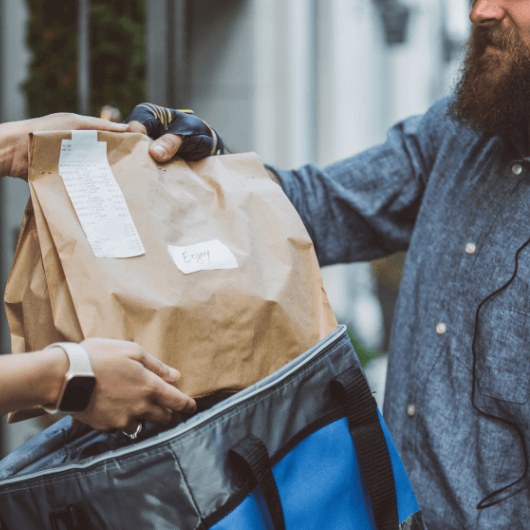
Most of us love to indulge in a tasty, glazed ring of sweetness with a few sprinkles of joy on top.
However, that’s not what we mean by ‘doughnut delivery’.
We’ve found that a 2.14-mile doughnut diameter is the ideal delivery distance for restaurants looking to reduce their carbon footprint.
Our research found that it is in fact more cost-effective for restaurants with their own delivery riders to operate within the 2.14-mile range and cover further distances using delivery service providers, independent contractors, or third-party delivery apps if need be.
By setting a delivery diameter, restaurants can limit the miles covered by their drivers thus, limit their carbon emissions.
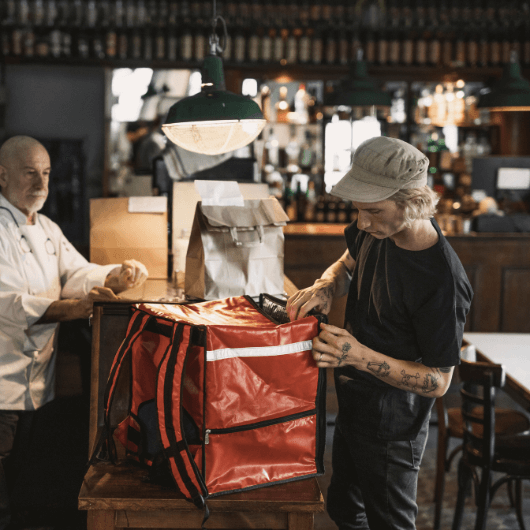
One of the most efficient ways to reduce the time and distance traveled by a delivery driver is by using the best, most efficient delivery route to complete a job.
Delivery automation technology plans the most optimal delivery route for the delivery driver to take. Essentially helping them to avoid areas with heavy traffic build-up and long routes (yes San Francisco, we’re looking at you).
These key features have helped our restaurant partners to save fuel, cut back on emissions, and reduce the time it takes to deliver by up to 20%!
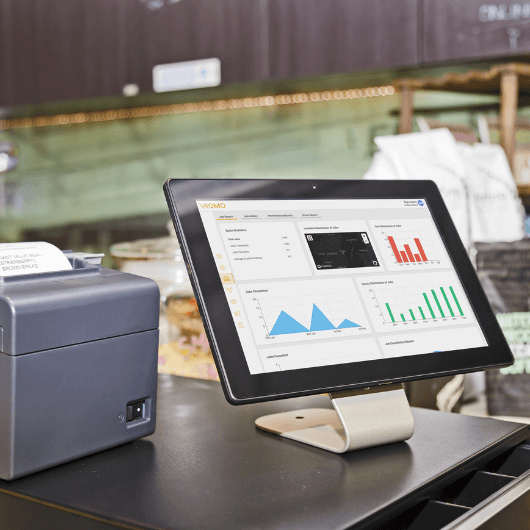
We all know by now that delving into data, analyzing analytics, and measuring metrics isn’t just for the big players.
In order to be able to compete, every business in every industry must be able to measure performance, identify gaps in their operations, and make more informed, data-driven decisions for the future.
Keeping track of your delivery system and its performance is no different!
Measuring the right delivery analytics and metrics can provide restaurants with insightful data such as ‘distance traveled’ and ‘off-job distance’.
This essentially helps restaurants calculate their carbon footprint and plan ways to offset carbon in the future.
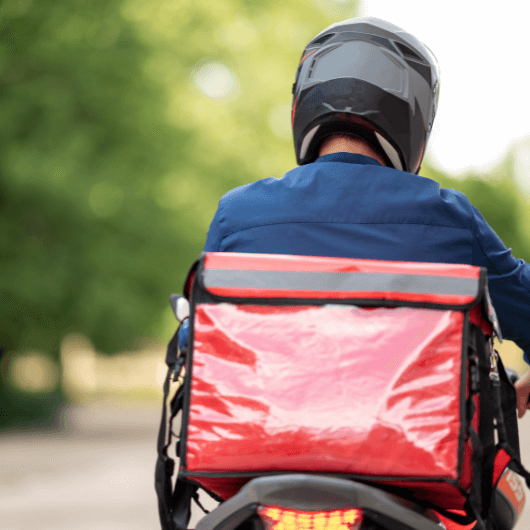
According to a study carried out by the University of Oxford, riding a bicycle instead of driving a car once a day reduces an average citizen’s carbon emissions by 67% in the transportation sector.
Taking a leaf from their book, restaurants can greatly reduce emissions by adopting more sustainable delivery options.
Looking ahead, the age of electric vehicles is upon us. A fleet of delivery personnel using electric vehicles would cut emissions by a significant amount for food delivery companies and restaurants alike.
Just for perspective, according to a 2019 study, the Nissan Leaf’s lifetime emissions were three times lower than those of a conventional diesel vehicle.
If such a finding hasn’t already encouraged you to look toward a more sustainable food delivery business model, we don’t know what will.

If you’re asking yourself this question, you’re already on the back foot.
Delivery automation is changing the game for restaurants across the globe. Not only in monetary terms but also when it comes to customer engagement, employee retention and yes, carbon footprint.
If you’re looking to have a more sustainable approach toward delivery and delivery management software isn’t on your product roadmap, maybe it should be.
And while you’re in the consideration stage, check out our top tips for choosing the right delivery management software for your food business!
Deliver more for your customers with delivery management software that automates dispatch, improves customer experience.

February 24, 2023
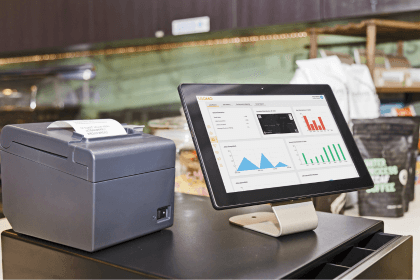
September 4, 2022
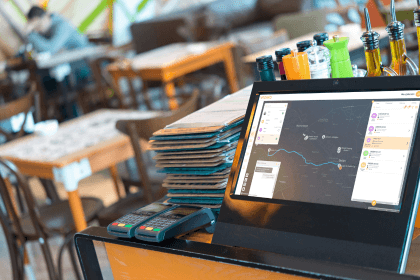
September 4, 2022